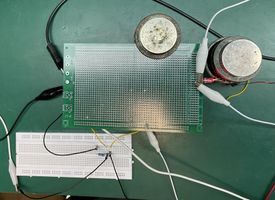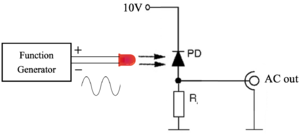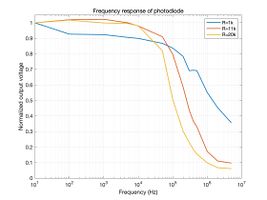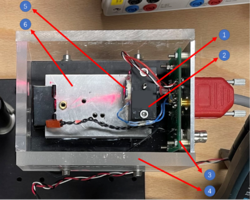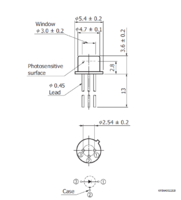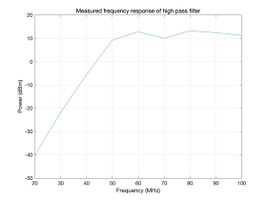Quantum Random Number Generator
Team Members
Wang Yang A0228753X
Xiao Yucan A0236278W
Zhang Munan A0236273E
Idea
We live in an increasingly connected world, where a superior source of entropy is the key to data security. The effectiveness of any cryptographic system is determined by the strength of the keys it used. In turn, the strength of the key is determined by the degree of randomness used in its generation. Besides, large amount of random numbers are at the core of Monte Carlo simulations, which are widely used in scientific research. Methods produce random numbers from any algorithm are called pseudo-random number generator(PRNG). And random numbers generated by PRNG are deterministic by definition and therefore unsuitable for cryptographic purposes.
In order to generate unpredictable random numbers, hardware random number generators have been widely used. These physically generated random numbers are considered "truly" random because it is either practically or fundamentally impossible to predict the outcome of such a device. Quantum Random Number Generators (QRNGs) belong to a class of hardware random number generators and leverage the random properties of quantum physics to generate a true source of entropy, improving the quality of seed content for key generation.
Early QRNGs were based on radioactive decay. And more recently, QRNGs based on Poisson statistics of photons have been developed. The core idea is shown in the figure below. Single photons generated by a laser source are incident on a semi-transparent mirror and the mutually exclusive events (reflection/transmission) are detected and associated with ‘0’ or ‘1’ bit values respectively. The unpredictability of generated numbers is ensured by the quantum nature of the process. However, such a scheme needs a reliable single photon source as well as single photon detectors and it's not possible for our project. Here, we decided to build a QRNG based on measuring vacuum fluctuations of a light field as a random source. More details will be discussed in the principle part.

- BENEFITS OF HAVING A QUANTUM RANDOM NUMBER GENERATOR:
- The source of randomness is unpredictable and controlled by quantum process.
- Live/real-time monitoring of entropy source is possible and highly effective as well.
- All attacks on the entropy source are detectable.
- APPLICATIONS OF QUANTUM RANDOM NUMBER GENERATOR:
- Securing data at rest in data centres
- Securing any kind of sensitive data
- Securing data in the cloud
- One-time pad for authentication in banking and other transactions
- Gaming applications and lottery
- Block-chain network
- Numerical simulations, statistical research
- IoT devices
- E-commerce and banking applications
- Cryptographic applications
- Telecom and 5G
- Monte Carlo Simulation
Principles
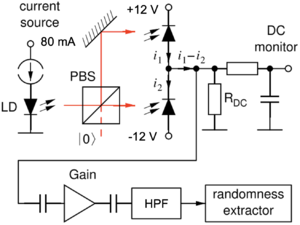
Setup
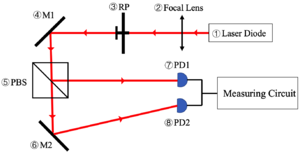
The original setup was created with as few components as possible to create a baseline performance that we can compare. A schematic of setup is shown in Figure 3.

Tool list
① Laser Diode
- Provide a light source, by changing the laser current can change the light intensity of the light source.
② Focal Lens
- By adjusting the focal length, the intensity of light that finally hits the photodiodes is adjusted.
③ RP: rotatable Polarizer
- The proportion of light intensity passing through PBS and reflected by PBS is controlled by adjusting RP.
④ Mirror 1
- By adjusting mirror 1, the falling points of the two Laser beams after passing through PBS and reflected by PBS can be adjusted simultaneously.
⑤ PBS: Polarizer Beam Splitter
- The laser beam incident to the PBS can pass through it or be reflected by it.
⑥ Mirror 2
- By adjusting mirror 1, the falling points of the laser beam after passing through PBS can be adjusted.
⑦&⑧: Photodiodes
- Detect the intensity of incident light
Description
- The laser beam comes from the laser diode. After passing through the focal lens and the rotatable Polarizer the laser beam incident to the mirror 1.Then the reflected laser beam incident to the Polarizer Beam splitter. The laser beam reflected by the PBS will incident to the PD1. The laser beam passing through the PBS will incident to the PD2.
Characteristic list
Oscilloscope
Frequency spectrograph
Process
- 26 February 2022:
* Did a basic characterization of photodiode * Inputted a sine wave signal and a laser pointer light, observed the waveform of the photodiode
-
Basic characterization of photodiode test
-
Schematic of basic characterization of photodiode test
- To understand the optical response of the photodiode, we used a laser pointer to test its output waveform, because the laser is not periodic, so the waveform is not regular, but there are signals from the oscilloscope.
- Then we inputted a periodic sine signal to excite the laser diode to output laser incidents on the photodiode, and it showed a periodic sine signal with a very regular sine waveform. When the frequency increased over 1 GHz, we could not observe a regular and stable waveform.
- 5 March 2022:
* Used different resistors to test the frequency response of photodiode
-
Graph of frequency response of photodiode
- We changed the resistors in the Schematic of basic characterization of photodiode test, from 1kΩ to 11kΩ and then 20kΩ. We found that higher the resistance of the resistor higher the output voltage but less sensitive to the high frequency.
- 12 March 2022:
* Build up the laser system and ensured the laser output
-
HL6501MG laser diode and schematic of internal circuit
-
Schematic of electronics laserconnector circuit
-
Laser source setup
- We used a HL6501MG laser diode, it is a 0.65 μm band AlGaInP laser diode (LD) with a multi-quantum well (MQW) structure. It is suitable as a light source for large-capacity optical disc memories and various other types of optical equipment. Hermetic sealing of the small package (φ=5.6 mm) assures high reliability.
- The Laser source consist of ① Laser diode; ② Thermostat; ③ Supply circuit for Laser diode and Thermostat; ④ Shell; ⑤ Focal lens; ⑥ Radiator. The Laser Diode is in the thermostat which is connected to the Radiator. We can set temperature on the Laser power supply. The Thermostat and Radiator will keep the temperature of the laser diode as same as that set on the laser power supply. There is a focal lens in front of the laser diode. We can use it to change the focal length the enlarge the laser intensity hitting on the photo diodes. And a shell made of acrylic sheet and 4 balance post.
- 19 March 2022:
* Soldered photodiode driving circuit * Test the feasibility
-
The S5972 is high-speed Si PIN photodiodes designed for visible to near-infrared light detection. These photodiodes provide wideband characteristics at a low bias, making them suitable for optical communications and other high-speed photometry.
-
Principle of photodiode driving circuit
-
Schematic photodiode driving circuit bolck
- 26 March 2022:
* Build up the whole system * Tune the bias of two photodiodes
- 2 April 2022:
* Focus the laser output * Maximize the laser power output
- 9 April 2022:
* Soldered high pass filter * Test its feasibility
-
Schematic of high pass filter circuit
-
Graph of theoretical high pass filter frequency response
-
Graph of measured high pass filter frequency response
-
Setup of high pass filter
-
Setup of gain block and high pass filter
- The measured total noise has a relatively flat power density in the range of 60-200 MHz. With a low pass filter of 200 MHz in the oscilloscope, we just needed a high pass filter of 60 MHz which compresses the low-frequency fluctuations. So we designed a high pass filter of 60 MHz and soldered the high pass filter.
- After that, we tested its performance. By comparing with the theoretical high pass filter graph, the measured high pass filter frequency response showed a high correspondence with it, which means it is feasible to apply it to the whole system to suppress the low-frequency fluctuations.
- 16 April 2022:
* Apply the high pass filter to the circuit * Record data and draw some graphs
- 23 April 2022:
* Processing experimental data * Draw autocorrelation images * Summarize and upload the experimental results
Results and analysis
Background reading
[1]Quantum random number generators, Miguel Herrero-Collantes and Juan Carlos Garcia-Escartin, Rev. Mod. Phys. 89, 015004.
